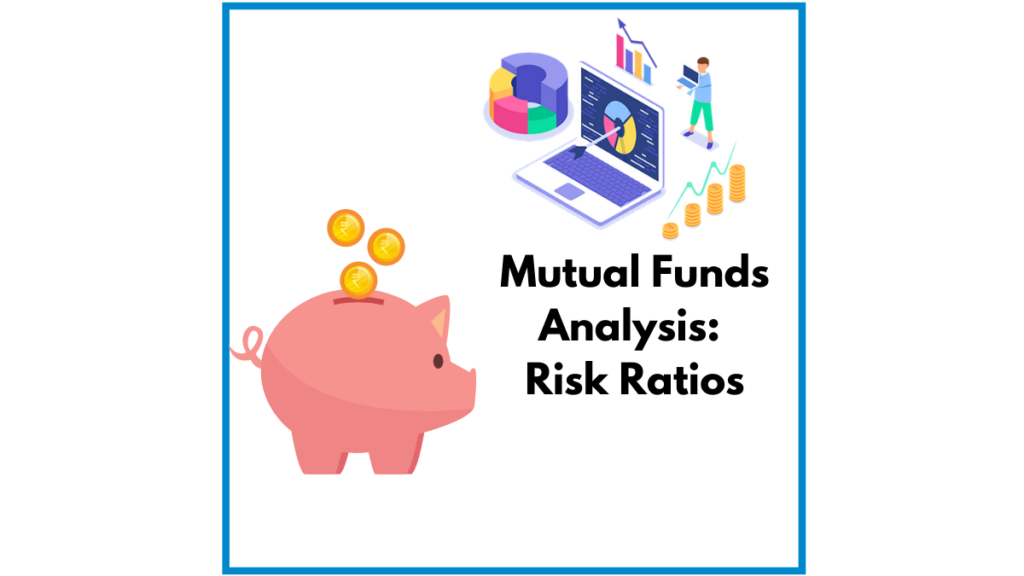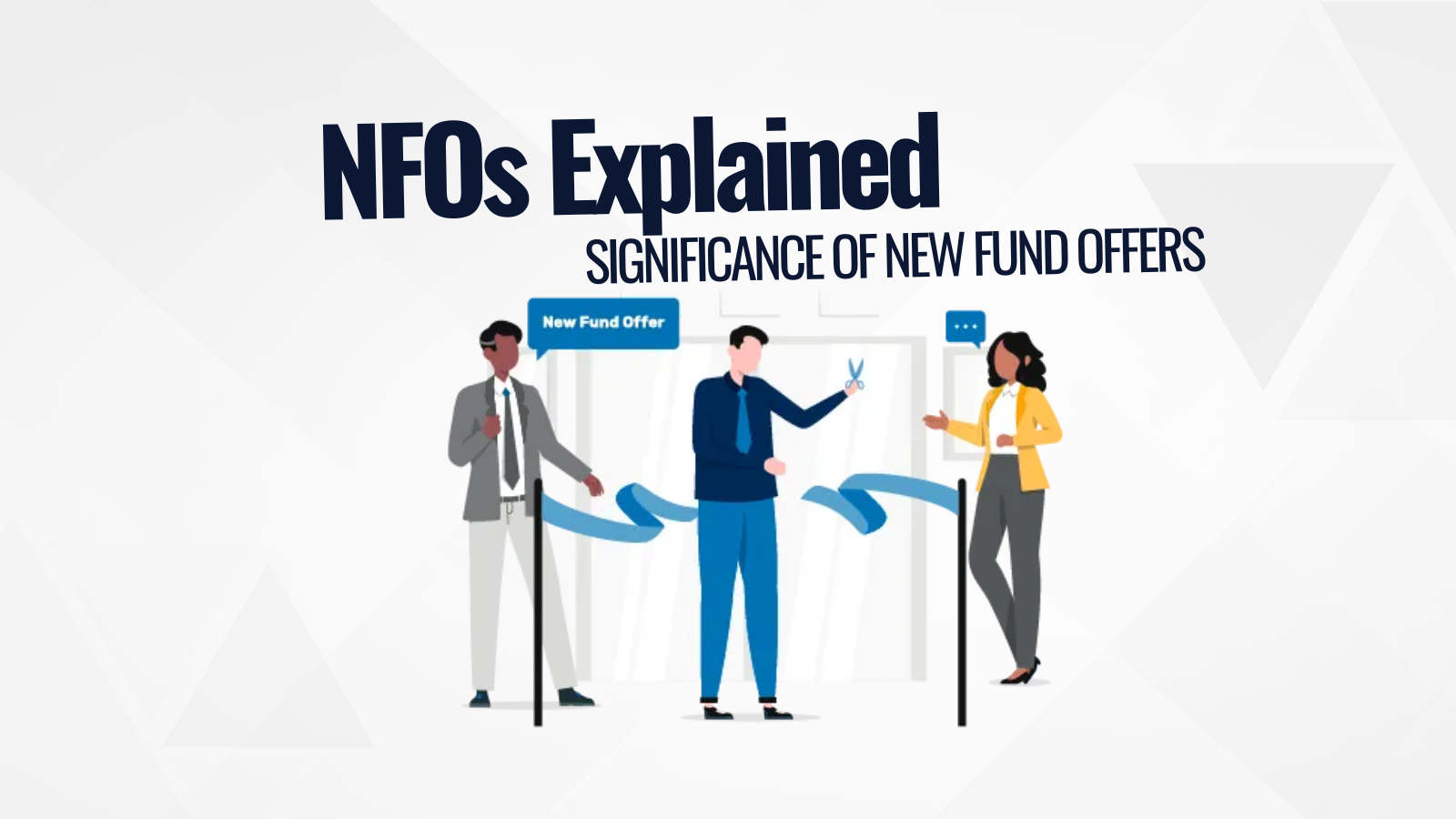Mutual Funds analysis includes various parameters. Comparative ratios form a major role in decision making of mutual funds selection. It is important to study the returns of the funds. But more importantly study of risk adjusted returns gives a comparative view of the funds.
Click to read our earlier posts on Mutual Funds Analysis:
The Key risk measures/ratios include:
(A) Alpha & Beta of Mutual Funds
- Alpha ratio is a measure of an investment's performance on a risk-adjusted basis. It takes the volatility (price risk) of a security or fund portfolio and compares its risk-adjusted performance to a benchmark index.
- Alpha indicates how fund generated additional returns compared to a benchmark. The excess return of the investment relative to the return of the benchmark index is its alpha.
For example, if an asset manager can reap a 10% return on a specific Mutual Fund against a benchmark index of 8%, his/her alpha ratio will be 2. Investors opt to invest as per the alpha ratio in Mutual Funds around 1.5.
Most common risk measures/ratios Mutual Funds Analysis is Alpha & Beta. To understand Alpha & Beta, one needs to understand the Capital Asset Pricing Model (CAPM) first.
(i) Capital Asset Pricing Model (CAPM)
CAPM is the mathematical relationship of fund returns & market risk -
Where :

Beta calculation is a complex statistical process. It includes statistical equations & curve plotting. So rather than calculation of Beta, analysis of Beta is more important.
By keeping the risk free rate as constant, with % change in benchmark return & beta, CAPM can compute scheme's expected return.
This relation highlights - Higher the Beta, Higher the risk.
- This is because, the risk premium (Benchmark - risk free rate) multiplies with Beta under CAPM.
- Thus, whenever the benchmark will rise, the scheme's expected rate by CAPM will rise higher due to high beta.
- On the contrary, when the benchmark will fall, the scheme's expected rate by CAPM will fall more than the fall in benchmark.
(ii) Calculation
Lets assume that a scheme’s beta is 1.6 & its benchmark is Nifty–100.
If Nifty–100 rises by 12% in a year, then according to CAPM, the fund's return will be =
5.8% + 1.6 * (12% - 5.8%) = 15.7% (assuming risk free rate is 5.8%).
However, if Nifty – 100 falls by 6%, the fund return will be =
5.8% + 1.6 X (-6% - 5.8%) = -13%.
Clearly higher the beta, higher is the risk. One should must check the beta of a fund & invest according to the risk appetite.
(iii) Alpha computation using CAPM
CAPM gives a prediction about mutual fund scheme's return. But actual return may differ from CAPM predicted return. The difference in actual returns and the return is predicted by CAPM is known as Alpha in mutual funds.
(iv) Inference of Alpha
For Instance, if by CAPM, a fund return comes to be 15%. The actual return is 17%. Then this 2% extra return is alpha which the fund manager generates. This extra return is the value addition by the fund manager of the scheme through superior stock selection.
Alpha is not just about giving high returns in bull markets, but also limiting downside when market is down.
(v) Inference of Beta for Mutual Funds Analysis
Beta of a scheme is disclosed on a monthly basis in the scheme factsheet. Any beta less than 1 denotes lower volatility and higher than 1 denotes more volatility compared to the benchmark index.
- Beta denotes the sensitivity of the mutual fund towards market movements. It is the measure of the volatility of the mutual fund portfolio to the market.
- When you are looking at the beta of a mutual fund, you are finding out the tendency of your investment's return to respond to the ups and downs in the market. Here, the market usually refers to the benchmark index which the fund follows.
- The beta of the market or benchmark is always taken as 1.
For example, if your mutual fund portfolio XYZ has a beta of 0.70, it denotes lower volatility. This means that for every rise or fall of 1 in the market, the value of XYZ may rise or fall by around 0.70.
(B) Sharpe Ratio
- The Sharpe ratio tells investors whether an investment's returns are due to wise investment decisions or the result of excess risk.
- It indicates how much risk was taken to generate the returns. Higher the value means, fund has been able to give better returns for the amount of risk taken.
(i) Calculation

(ii) Interpretation for Mutual Funds Analysis
Higher the Sharpe's ratio, better the risk adjusted return of your mutual fund portfolio. But sharpre ratio should not be analyzed in isolation for a scheme. It can mislead the investors in isolation. Where the return of a fund is low and also a low standard deviation, it will mislead the investor by showing a high Sharpe ratio.
Thus, peer group comparison is essential.
(C) Standard Deviation
- Standard deviation is a statistical tool that measures the deviation or dispersion of the data from the mean or average.
- When seen in mutual funds, it tells you how much the return from your mutual fund portfolio is straying from the expected return, based on the fund's historical performance.
- It measures the volatility of fund’s returns in relation to its average returns. It tells you how much the fund’s return can deviate from the historical mean return of the scheme.
For example if the portfolio XYZ has a standard deviation of 7% & average return of 15%, it means that it has a tendency of deviating by 7% from its expected average return and may give returns between 8% to 22%.
(i) Calculation

Where Variance (when you take more than 3 years data) = (Sum of squared difference between each monthly return & its mean / number of monthly return data)
(ii) Interpretation
By definition, approximately 68% of the time, the total returns of any given fund are expected to differ from its mean total return by no more than plus or minus the standard deviation figure. 95% of the times, a fund's total returns should be within a range of plus or minus 2 times the standard deviation from its mean. In any case, greater the standard deviation, greater the fund's volatility.
(D) Treynor Ratio
Treynor ratio is a measure of the returns earned more than the risk-free return at a given level of market risk (beta). It tells how much an investor gets reward for the systematic risk (Beta) undertaken. Hence, is also called as reward-to-volatility ratio.
For example: If fund A and fund B both have 3-year returns of 15%, and fund A has a Treynor's ratio of 1.40 and fund B has a Treynor's ratio of 1.25, then you can choose fund A, as it gives higher risk-adjusted return.
(i) Calculation

(ii) Interpretation
The beta of a fund which invests in highly volatile stocks will be higher than the fund which invests in less volatile securities. Stocks having high volatility, rise & fall faster during a market rally & slump respectively.
Higher the beta, higher is the sensitivity of fund returns and riskier is the investment. Thus, as compared to low-beta stocks, the stocks with higher beta may generate higher or lower returns based on the market performance. In other words, the Treynor Ratio takes into account market risk while calculating risk-adjusted returns.
(E) Risk Measures of Equity Multi cap Funds

- Among these funds, Nippon Focused Equity Fund has the highest volatility w.r.t market with highest Beta of 1.13%
- Its variability of returns is also very high with highest Standard deviation. The fund's Alpha is also negative.
- Among these funds, Quant Active Fund has the highest Alpha & Sharpe Ratio.
- Other funds with good alpha ratio include Canara Robeco Equity Diversified Fund, UTI Equity Fund and SBI Focused Equity Fund.
- Beta of Canara Robeco Equity Diversified fund is the lowest among the above list.
Note : We have considered top 10 highest performing funds (10 yearly return) of the Equity Multicap Category,
Risk Measures based on calendar month returns for the last three years. As on 31-Oct-2020
(F) Point to remember while analyzing Ratios for Mutual Funds
Ratios are based on historical data and indicative of future performance. They do not give surety of future performance. So, they should not be studied in isolation but in comparative terms. Also, mutual funds analysis includes various other fundamentals.

Drop us your query at - info@pawealth.in or Visit pawealh.in
References: Industry's Publications & Websites of AMCs .
Disclaimer: The report only represents personal opinions and views of the author. No part of the report should be considered as recommendation for buying/selling any stock/fund. Thus, the report & references mentioned are only for the information of the readers about the industry stated.




